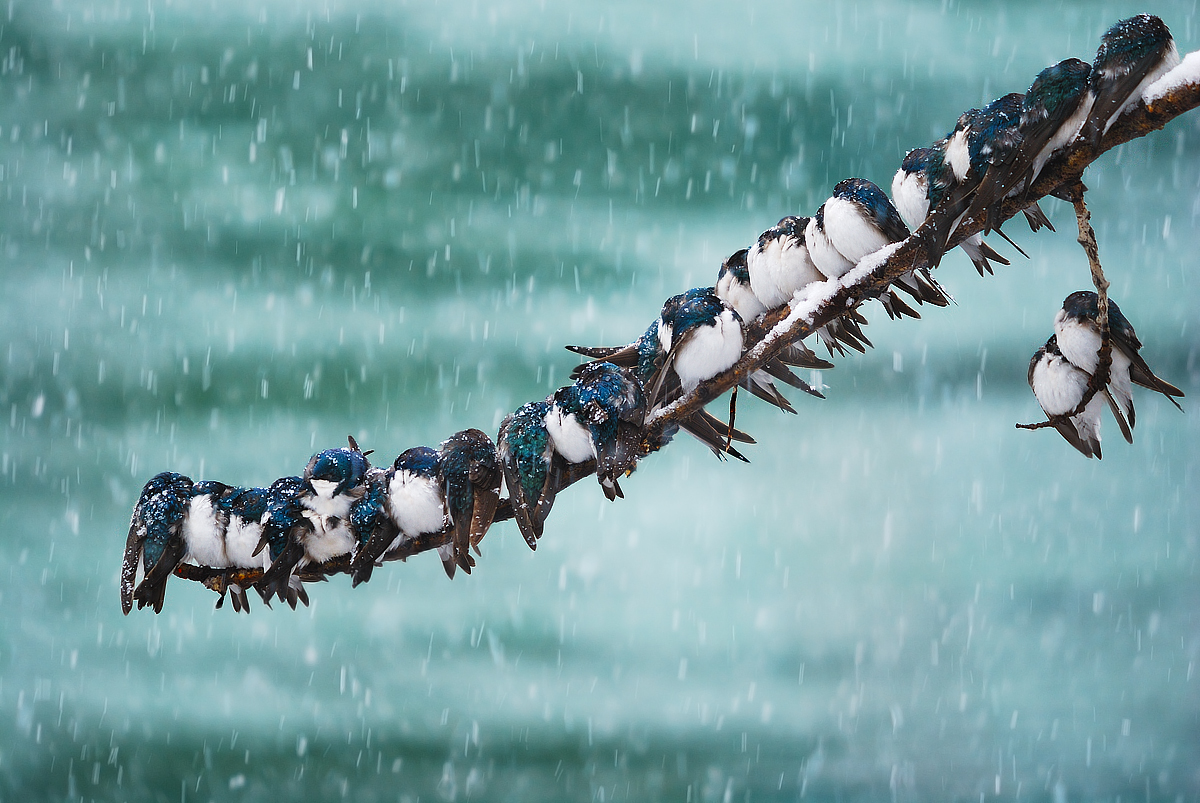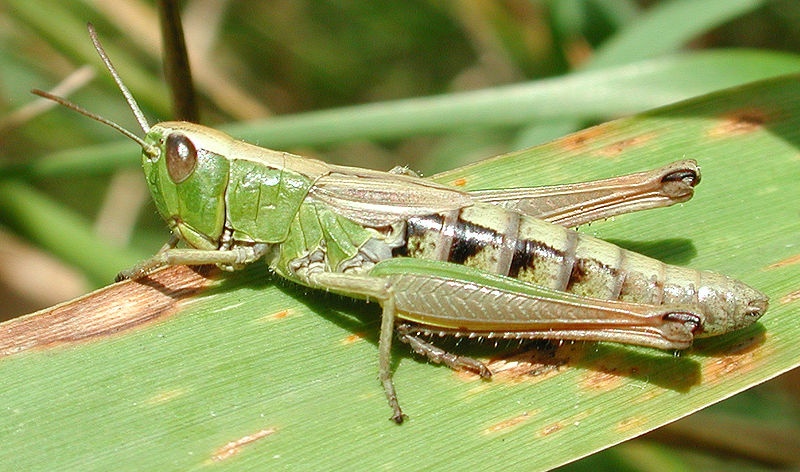For those of us living in chilly climates, preparing to head outside on a cold day may be as simple as slipping into a bulky coat, gloves, and (my personal favorite) wool socks. We need this extra insulation because humans are especially bad at retaining body heat as the ambient temperature drops. But what about other animals? How, for example, do small, seemingly delicate birds cope with these harsh conditions?
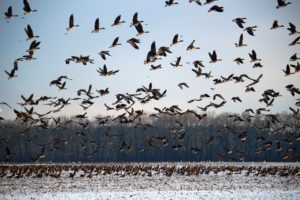
Birds have evolved several strategies that allow them to survive during the winter. One of the most obvious and dramatic strategies is to simply pack up and leave! Food becomes more scarce as temperatures drop and plants are covered in snow or die, leading to hard times for the inhabitants of the northern latitudes. By traveling to warmer locations, where food is abundant year-round, many birds avoid the looming threat of winter starvation. However, while migrating to warmer climates can be a great solution to the perils of winter, this travel is not without its own threats (hint: keep your housecat indoors). Not only do migrating birds have to deal with the threat of humans and predators, but they also must compete for territory once they return to their original habitat in the spring.
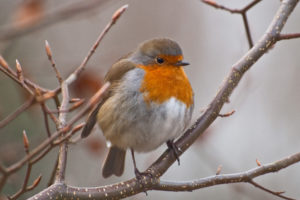
Life for the stubborn bird who lingers throughout winter isn’t a rosy proposition either. Freezing winds and wet, slushy snowfall are regular events these hardy avians must endure. Thankfully, feathers help mitigate some of this misery. Many birds are able to trap pockets of air around their bodies by puffing out their feathers on especially frigid days. These air pockets help to seal in body heat, creating a jacket of warmth (and look ridiculously adorable). Bird feathers also have a protective coating of oil that allows them to stay relatively dry.
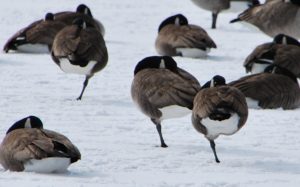
But what about the parts of birds that are not covered in feathers? Many birds can simply lift their feet into the air pockets made by the feathers to warm their appendages Additionally, larger birds such as geese and ducks have an incredible adaptation for warming their legs as they paddle through freezing water: counter-current heat exchange. The veins and arteries in the leg are so close together that blood leaving the body conducts some of its heat to blood leaving the legs. This heats the blood moving up and allows the bird to maintain its toasty body temperature.
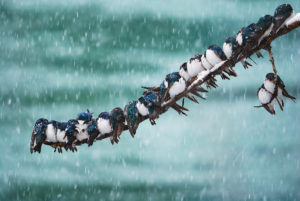
In addition to the strategies above, birds may also shiver and flock. Birds do shiver, just like mammals, in order to maintain their body temperature. Flocking and huddling together for warmth can be even more advantageous, especially if they have a space to share.
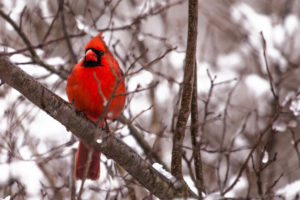 While birds do have tactics for combating the ravages of the winter, they could always use a bit more help. Putting out bird feeders with suet and sunflowers will provide them with the fuel to keep their metabolisms up while also providing you with some great wintertime entertainment.
While birds do have tactics for combating the ravages of the winter, they could always use a bit more help. Putting out bird feeders with suet and sunflowers will provide them with the fuel to keep their metabolisms up while also providing you with some great wintertime entertainment.
References:
- Gibbons, J. Keeping Warm in Winter is for the Birds. Smithsonian Insider (2015). Available at: https://insider.si.edu/2015/01/keeping-warm-winter-birds/
- How Do Birds Cope With Cold in Winter. Audubon (2015). Available at: https://www.audubon.org/how-do-birds-cope-cold-winter. (Accessed: 23rd January 2019)
- How do birds keep warm in the winter? | U.S. Fish and Wildlife Service Midwest Region. Available at: https://www.fws.gov/midwest/news/WinterWarmth.html. (Accessed: 24th January 2019)
Featured Image Credit: Keith Williams, CC BY-NC-ND 2.0

